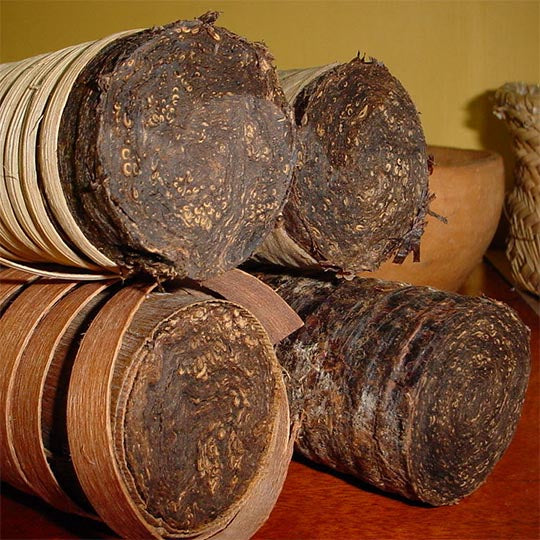
Mangotes ou Cordão de Tabaco
Share
A tobacco mangote is a processed tobacco product in the form of a rope that fundamentally is manufactured by saucing and then spinning a quantity of fresh tobacco leaves and then subjecting the resulting green rope to a fermentation process.
Tobacco mangotes or cordas (ropes) are a product of Brasil, where they traditionally were sewn into fresh cowhides for the purpose of packaging for exportation. Today's manufacturing concerns state that the ropes they source are nowadays packed in plastic rather than skins.

Brazilian tobacco rope, also known as corda de tabaco or simply corda, is a type of smokeless tobacco that is popular in Brazil. It is made by tightly twisting and braiding cured tobacco leaves into a rope-like form, which is then aged for several months. During this process, the tobacco ferments and gains flavor and aroma.
The process of making Brazilian corda or magnote de tabaco involves several steps, including harvesting, curing, twisting, and fermenting the tobacco leaves. Here's a general overview of the process:
- Harvesting: Mature tobacco plants are harvested, and the leaves are separated from the stems.
- Curing: The tobacco leaves are dried in a process called curing. This can be done using different methods, but one common approach in Brazil is to hang the leaves in a barn or shed and allow them to air-dry for several weeks.
- Twisting: Once the leaves are dried, they are moistened with water and then tightly twisted and braided together to form a rope-like shape. The rope is usually about 1 inch in diameter and can be several feet long.
- Fermenting: The twisted rope is then aged for several months in a humid environment. During this time, the tobacco undergoes a fermentation process, which is key to developing the flavor and aroma of the corda de tabaco.
- Packaging: After the fermentation process is complete, the corda is typically cut into smaller pieces and packaged for sale.
It's worth noting that the exact process of making corda de tabaco can vary depending on the region and the individual manufacturer. However, the steps outlined above are generally common to most traditional corda production methods in Brazil.

The Magnote or Corda is usually cut into small pieces and chewed or placed between the cheek and gum. It can also be mixed with water to create a type of snuff which is blown into the nose using a small pipe.
Corda or Magnote de tabaco is known for its strong, robust flavor and is often compared to other forms of smokeless tobacco such as Swedish snus or American chew. A sort of snuff tobacco that is customarily made with tobacco rope is the Bavarian schmalzler.
